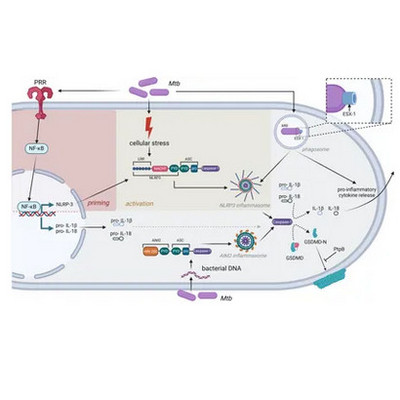The role of inflammasomes as central inflammatory hubs in Mycobacterium tuberculosis infection
Abstract
Mycobacterium tuberculosis (Mtb) infection represents a global health problem and is characterized by formation of granuloma with a necrotic center and a systemic inflammatory response. Inflammasomes have a crucial role in the host immune response towards Mtb. These intracellular multi-protein complexes are assembled in response to pathogen-associated molecular patterns (PAMPs) or danger-associated molecular patterns (DAMPs). Inflammasome platforms activate caspases, leading to the maturation of the proinflammatory cytokines interleukin (IL)-1 and 18 and the cleavage of gasdermin D (GSDMD), a pore-forming protein responsible for cytokine release and pyroptotic cell death. Recent in vitro and in vivo findings have highlighted the importance of inflammasome signaling and subsequent necrotic cell death in Mtb-infected innate immune cells. However, we are just beginning to understand how inflammasomes contribute to disease or to a protective immune response in tuberculosis (TB). A detailed molecular understanding of inflammasome-associated pathomechanisms may foster the development of novel host-directed therapeutics or vaccines with improved activity. In this mini-review, we discuss the regulatory and molecular aspects of inflammasome activation and the associated immunological consequences for Mtb pathogenesis.
Read more at Front. Immunol., 11 September 2024

